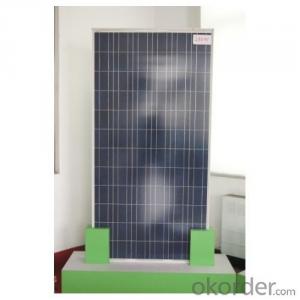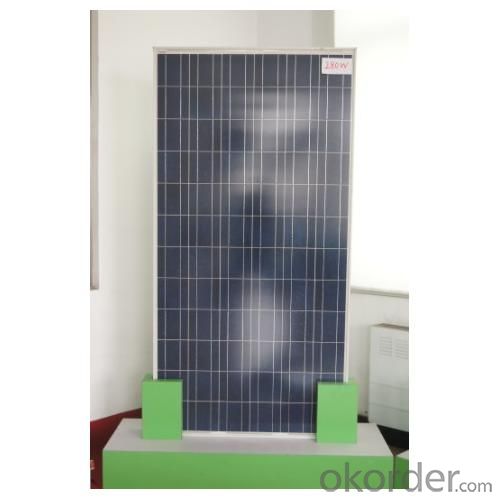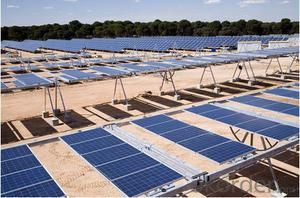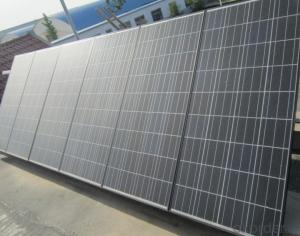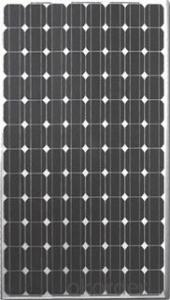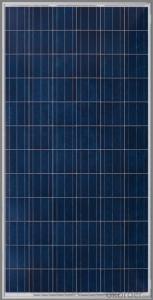Mini Solar Panels - CNBM 300W Polycrystalline Solar Panels Made in Thailand
- Loading Port:
- Tianjin
- Payment Terms:
- TT OR LC
- Min Order Qty:
- 26 pc
- Supply Capability:
- 100000 pc/month
OKorder Service Pledge
OKorder Financial Service
You Might Also Like
Characteristics of Polycrystalline Solar Panel
I Solar Cell : High efficiency crystalline solar cell. Even if under the weak light, the solar module can produce maximum power output.
II Tempered glass (toughened glass): Anti-reflecting coating and high transmission rate glass increase the power output and mechanical strength of solar module.
III EVA and TPT: Using high quality EVA and TPT to prevent destroying and water.
IV AI frame: Without screw, corner connection. 6 holes on the frame can be installed easily.
V Junction box: Multi function junction box with water proof.
VI Long lifetime: ≥25 years; Less power decrease.
VII Good performance of preventing from atrocious weather such as wind and hails.
VIII Resisting moisture and etching effectively, not effected by geology. .
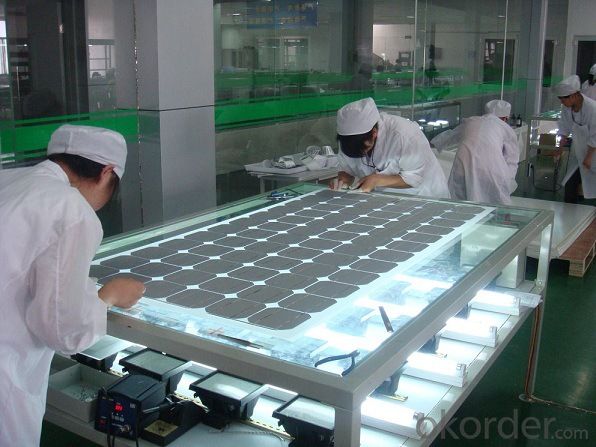
Standard Test Conditions of Polycrystalline Solar Panel
The opto-electrical specifications shown below are stabilized values being measured at Standard Test Conditions of multicrystalline silicon Solar Panel, Irradiance: 1000W/m2, Spectrum: AM1.5 at 25°C, The info below is subject to manufacturing tolerances. Where appropriate minutes of measurement are available and are used for the dimensioning of the installation.
Currently,We have 250w-300w solar panel stocks in Both West and East Coasts made in Vietnam,India,Korea,Malaysia and Japan.Meanwhile,we also arrange production line in Wisconsin,USA.If you're interested,please contact us soon.
Thanks for your time.
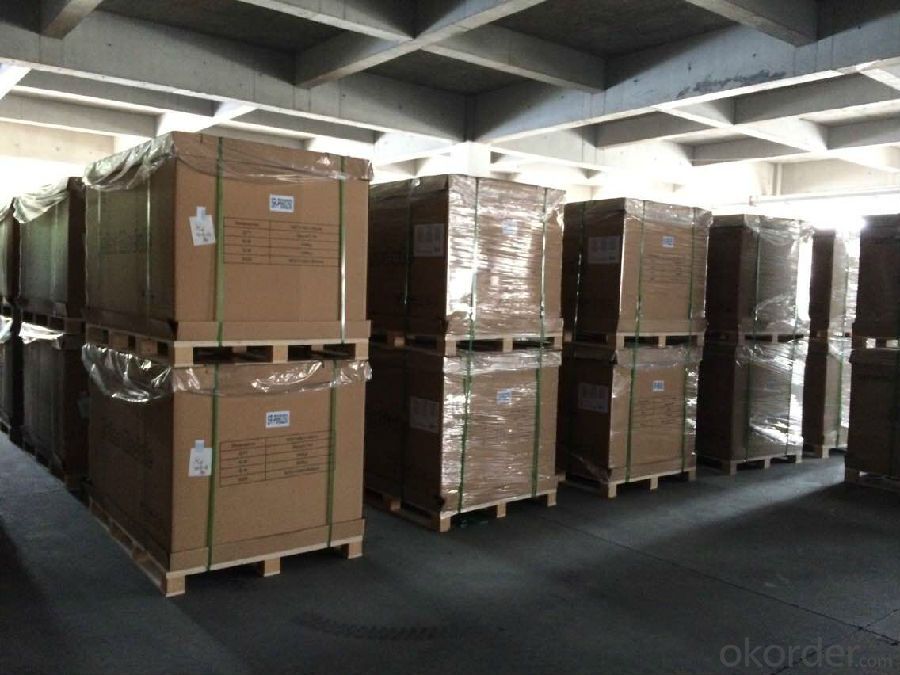

- Q: I was wondering if they create other forms of energy besides electrical that is unwanted. Like heat due to the friction of something, or sound. Also why is a solar panel not able to collect 00% of the energy that is striking its panels. And how could the efficiency of this be hypothetically improved.
- Science. The best solar panels we have only get like 22% of the sunlight for conversion into energy. That is simply the best they know how to make with current technology. And for that your talking about a mobile panel that tracks the sun as it moves at the equator. A solar panel in say Canada is lucky to get 0% even on a sunny day. But even if a solar panel got 00% efficiency, it's still not a lot. Sunlight is too diffuse to be a good power source, and you'd need to cover lots of ground to get power. Worse, you can only get power when the sun is out during the day. So for power at night you'd need a battery, or another source of power. The 'newest' idea is to capture sunlight to make 'lasers' that boil water, to turn turbines and make electricity. They cost way more then they are worth right now though...
- Q: I've found something called maximum system voltage 000v on my 0 w panel nameplate. Its impossible for 0w to have 000v, right?
- Hi No i very much doubt it could produce that sort of voltage so get a voltmeter and check it. bright sunshine and dark.
- Q: Can solar panels be used in areas with high winds?
- Yes, solar panels can be used in areas with high winds. However, it is important to ensure that the solar panel installation is designed and built to withstand the specific wind conditions of that area. This may involve using appropriate mounting systems, securing the panels properly, and considering the orientation and tilt angles. Additionally, selecting high-quality materials and conducting regular maintenance can help ensure the longevity and performance of the solar panels in high wind areas.
- Q: What is the impact of dust and dirt on solar panels' efficiency?
- Dust and dirt on solar panels can significantly reduce their efficiency. When dust accumulates on the surface of the panels, it blocks sunlight from reaching the photovoltaic cells, thereby reducing the amount of electricity generated. The accumulation of dirt can create a barrier that hinders the panels' ability to absorb sunlight effectively. Regular cleaning and maintenance of solar panels are crucial to ensure optimal efficiency and maximize energy production.
- Q: I live in Los Angeles area, I see the ads that, they will install solar panel for $0. I would like to know what is the catch ?Thanks You.
- The catch is you pay a monthly electric bill to the company that installed it. There are a couple ways to pay for solar power. One way is to pay the full cost of installing it then get all the power it makes at no cost. The other way is they install it for free and they become like a second power company. You pay them for the solar power and still pay your electric utility for any power from their generator that you use. The idea (usually a promise) is that the monthly rate will be lower than the power company charges. I would prefer to pay the full cost of the installation and own the power it makes from then on. But you need to have enough cash, or the ability to borrow enough, to pay that way.
- Q: What is the maintenance cost of solar panels?
- The maintenance cost of solar panels is generally low. Routine maintenance such as cleaning the panels and checking for any damage or debris is recommended, which can be done by the owner or a professional. Additionally, occasional inspections and repairs may be required, but these costs are minimal compared to the long-term benefits of using solar energy.
- Q: What is the working principle of solar panels?
- the inorganic salts such as gallium arsenide Ⅲ-Ⅴ compounds, cadmium sulfide, copper indium selenium and other multi-compounds as the material of the battery;
- Q: Can solar panels be installed on a military base?
- Yes, solar panels can be installed on a military base. In fact, many military bases around the world have already implemented solar energy systems as part of their efforts to reduce reliance on fossil fuels and promote renewable energy. Solar panels provide a sustainable and cost-effective source of electricity for various facilities and operations on the base. Additionally, the installation of solar panels on military bases can contribute to energy independence, resiliency, and environmental sustainability.
- Q: What is the impact of roof shading on solar panels' efficiency?
- Roof shading has a significant impact on the efficiency of solar panels. When the panels are shaded, they receive less sunlight, which reduces their ability to generate electricity. Even a small amount of shading, like from nearby trees or buildings, can lead to a drop in overall panel efficiency. It is crucial to ensure the panels are installed in areas with minimal shading to maximize their performance and yield.
Send your message to us
Mini Solar Panels - CNBM 300W Polycrystalline Solar Panels Made in Thailand
- Loading Port:
- Tianjin
- Payment Terms:
- TT OR LC
- Min Order Qty:
- 26 pc
- Supply Capability:
- 100000 pc/month
OKorder Service Pledge
OKorder Financial Service
Similar products
Hot products
Hot Searches
Related keywords
